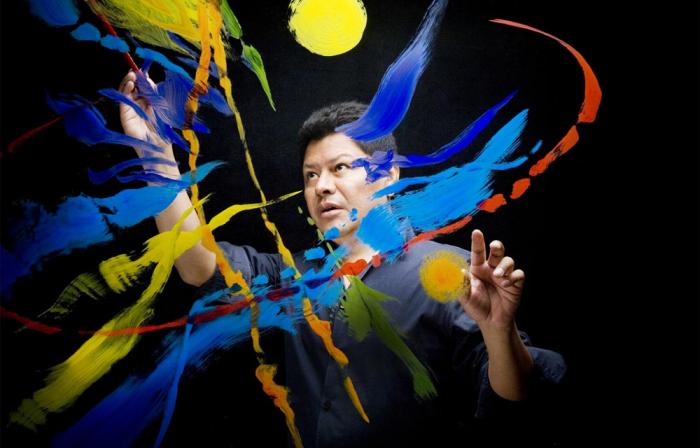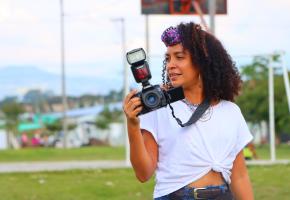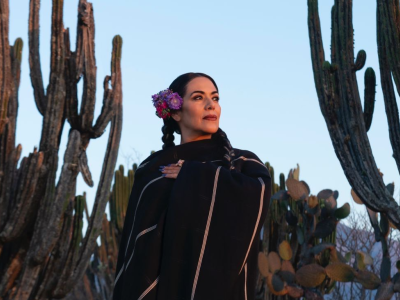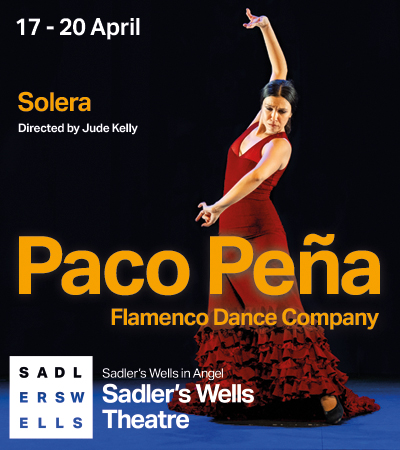On a bright sunny Saturday morning, I had the opportunity to view Carlos’ paintings and can't say I was expecting what I saw. I had to almost adjust my eyes to an even brighter vision than the shining sun outside. Carlos’ ability to create and use such vibrant colour is astounding, providing the feeling that if the room fell into complete darkness, the paintings would glow and light the room up once again.
Sandra tells me that during her visit to Carlos’ hometown, she was able to learn about the traditions of his indigenous background – the Ingas. She then pointed out how his paintings were done in an emotional frame of mind, attempting to channel the teachings and influences of the Inga tribe. Maybe that is why the vibrancy is so obvious.
Recurring images can be seen across the various paintings around the room. Sandra tells me he has a meaning for each of those symbols, one in particular was drawn by Carlos on a book he gifted to Sandra – the symbol meaning “exchange”. He created this symbolic language himself and was surprised to know he doesn’t normally make his definitions available to the public. In my opinion, it would maybe allow people to spend that little extra time looking at his work and getting his intended message, instead of just waltzing by after commenting on the pretty bright colours.
The placement of brush strokes seem chaotic at times but once you take a step back and admire it as an entirety, the “chaos” becomes natural and you’re transported into his homeland, one where brightly coloured feathers and the colourful fauna and flora of Colombia’s jungles have an almost symbiotic respect for each other. Carlos’ admiration and connection with nature is seen through his paintings and even his sculptures.
For him, it seems as if the importance of embracing his culture and heritage outweighs anything else, and that he is truly thankful for the position he’s at right now because of the inspiration those spheres provided him with. A youthful spirit and message is undoubtedly transmitted, which I believehas the power to influence many youngsters to follow the artistic path since painting with emotion is just as important as painting with technique; so if you lack technique, your emotions are there to back you up.
Sandra tells me his documentary taps on what moves him about Colombia, focusing on his hardships when it comes to racism against natives. Royal Ballet’s soloist Fernando Montaño was granted a private viewing at Sandra’s gallery of the documentary, which moved the dancer to the point of tears. This is what I feel Carlos is trying to achieve – make people feel their rawest of emotions.
Latino Life: What do you think of the importance of Latin American artists to stick to their unique style instead of giving into the internationally accepted style?
Carlos Jacanamijoy: The mainstream tendencies of art is what we now call “contemporary” and it’s been labelled this way for a few years already; it is also referred to as “conceptual art”, encompassing installations, artistic objects, performances, etc. They have all become interdisciplinary subjects that now can co-exist with each other in a more malleable relationship between human and social sciences as well as art theory. For me, it’s important to be in touch with the international stream because of the inclusiveness it provides.
In respect to the Latin American identity, it seems to me that throughout the art history of western society, it has always been seen as mainly Eurocentred or even first world countries. But now, doors have been opened to the so-called third world countries, meaning Latin America in this case. Latin Americans and its artists have always been in a constant fight to inform their ideas and inner-most thoughts from an insider. It is from there [Latin American countries] in which artists from the wrongly-named third world, have to make everyone understand our thoughts on life and belonging.
Latino Life: How does one come about creating a sphere of influence for the younger generation – especially from Latin America - that may lack the technical abilities to make art as the European masters did so long ago?
Carlos Jacanamijoy: I believe the practice of “unlearning” what has been taught for so long is a current idea roaming around. Nowadays teaching art has changed dramatically compared to when I trained in it. Today, ideas prevail when compared to technique and skill, which almost means that if an artist lacks balance between them, he or she won’t necessarily do badly in the field. Making art is not solely reserved for those who can draw and paint. The idea is to understand art as a means of changing the human consciousness, hoping to have a social impact.
Carlos will be in London until the 10th March. For more information email contact@caringforcolombia.org or through Sandra Higgins’ facebook page https://www.facebook.com/pages/Sandra-Higgins-Independent-Art-Advisor-and-Curator/102179136502839 or twitter @DiscoverArtNow.
Proceeds from the exhibition will benefit the Art Education Programs of Caring for Colombia Foundation.
“Caring for Colombia (CFC) is a 501(c)(3) nonprofit organization that connects donors with high-impact social initiatives in Colombia. From our base in New York, CFC raises and channels funds to support projects that empower vulnerable Colombian children and adolescents through education, health, and the arts.
CFC partners with Colombian organizations that have demonstrated an ability to utilize resources efficiently and in a way that truly reaches project beneficiaries. Our commitment to monitoring how donations are spent makes CFC one of the most reliable methods of responsible social investment in Colombia. Contact us to see how you can become part of Colombia's transformation.”
















